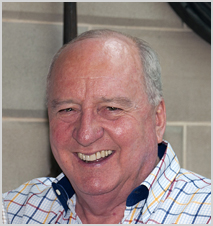 Notorious talkback radio host Alan Jones is never short of a few words on any subject. This week he's had a lot to say about the National Broadband Network. The NBN is a subject close to our hearts and will have a significant impact on the cloud industry.
Notorious talkback radio host Alan Jones is never short of a few words on any subject. This week he's had a lot to say about the National Broadband Network. The NBN is a subject close to our hearts and will have a significant impact on the cloud industry.
One of the problems of the project however is that it's become over-politicised and there is a lot of misinformation out there. Renai LeMay from leading Australian technology site Delimiter has done a very good job of covering some of the concerns raised by Alan Jones. It's worth a read.
Radio shockjock Alan Jones made a statement riddled with factual errors about the Federal Government’s National Broadband Network project on his radio program this morning, describing it as a “white elephant” and a “disaster” and inaccurately claiming that the future of telecommunications is “clearly wireless”, rather than the mainly fibre model the NBN is mainly using.
Jones’ comments this morning stemmed from a report in The Australian newspaper that negotiations had collapsed between the Labor Federal Government and the Coalition NSW State Government over access to NSW power poles to aid in NBN Co’s fibre rollout across NSW. The spat is only the latest disagreement between the Labor Federal Government and the predominantly Coalition-dominated state governments over the NBN, with Victoria having been particularly unhappy with the NBN deployment.
“Well this NBN disaster rolls on,” said Jones. “The white elephant promotes cable technology when the future is clearly wireless. And it’s hopelessly behind schedule, hopelessly over budget, hopelessly unable to capture the public’s imagination. And will be obsolete before it’s built, but polls today say it’s 50-50 [laughs]. How high would they be in the polls if they got something right? Only about 15 per cent of households have bothered to connect to it where it’s been rolled out – 15 per cent.”
“Some say we’ll eventually fork out $50 billion to build it. It’s not in the budget, and it’s hard not to see why. Consider this for example, I see the O’Farrell Government is fighting a last-ditch battle with the Commonwealth over the cost of rolling out NBN cable onto New South Wales power poles where cable can’t go underground. The Federal Government’s now threatening to use draconian laws to overrule New South Wales, a move which the State Government says will force it to increase the cost of electricity to consumers by between $5 and $7 for 20 years.”
Unfortunately, Jones’ statement this morning on air appears to contain a number of incorrect statements.
The idea that Australia’s broadband needs could be served in future by wireless technology — especially 4G mobile broadband is not a new one. It has been raised repeatedly by the Coalition over the past several years as an alternative to the fixed FTTH-style rollout which predominantly features in the NBN. The case for wireless as a future broadband replacement for fixed infrastructure has been strengthened by the huge growth in uptake of 3G and 4G mobile broadband services in Australia, with telcos like Telstra adding on more than a million new customers a year.
However, the global telecommunications industry is currently almost universally in agreement that in every country, telecommunications needs will continue to be served by a mix of fixed and wireless infrastructure.
In Australia, for example,, commentators such as Telstra CEO David Thodey have consistently stated that they expect Australians to buy both mobile and fixed broadband packages in future, as they serve differing needs; fixed broadband to supply homes with powerful connections to facilitate big downloads such as video, and mobile broadband when outside the home, for access to services which typically require lesser capacity. In addition, mobile towers typically also require their own fibre connections to funnel data back from wireless connections to the major fixed-line telecommunications networks.






